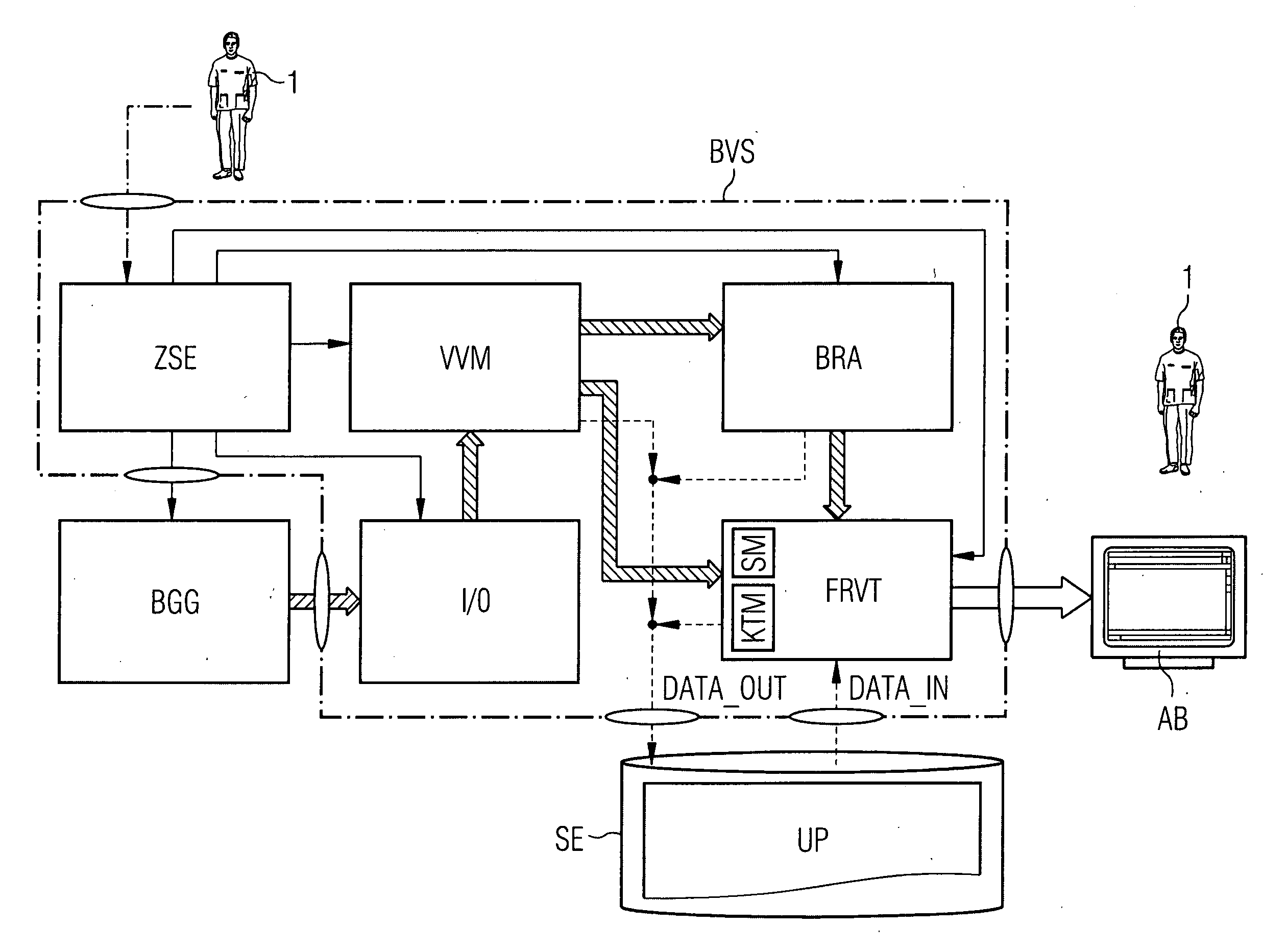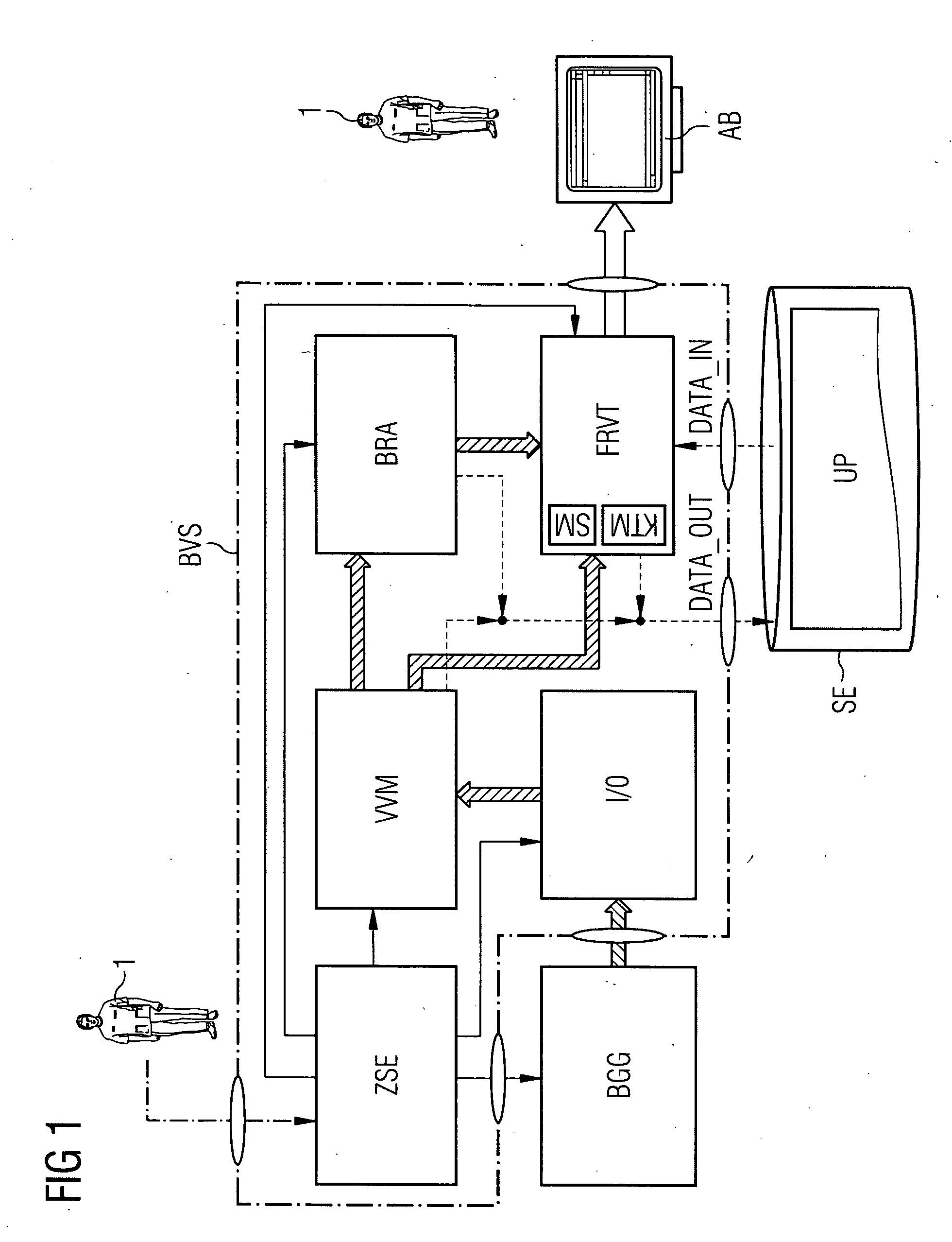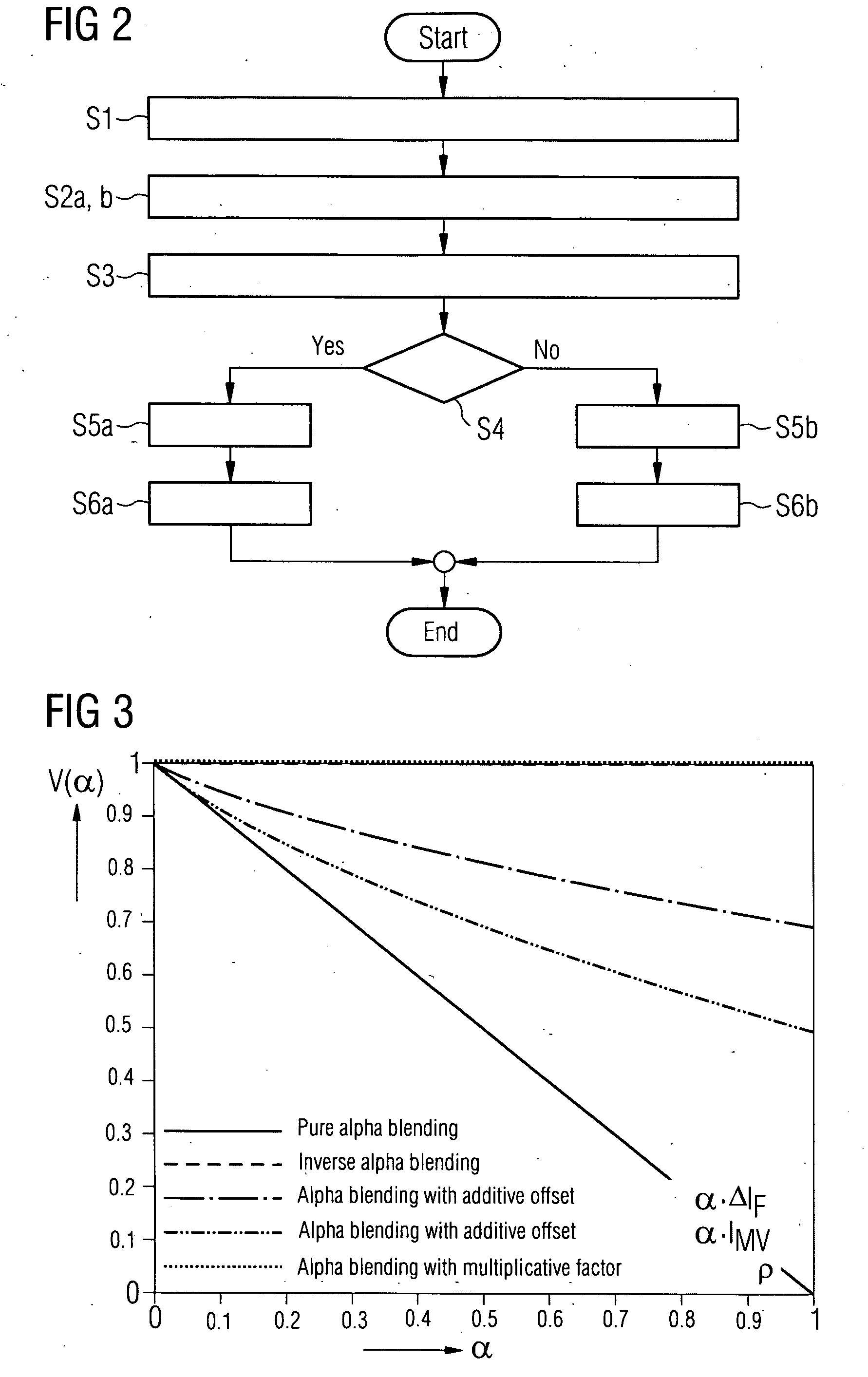Image system for retaining contrast when merging image data
a technology of image data and contrast, applied in the field of imageprocessing, imagevisualizing, imagearchiving system, can solve the problems of loss of information about the exact spatial positioning of implants or medical instruments in relation to the surrounding tissue area, failure of methods, and loss of information about the spatial relationship between segmented image objects bo in the foreground bv of the merged aggregate image b, etc., to achieve the effect of increasing the precision and safety of minimally invasive medical interventions
- Summary
- Abstract
- Description
- Claims
- Application Information
AI Technical Summary
Benefits of technology
Problems solved by technology
Method used
Image
Examples
Embodiment Construction
[0024]The system components of the inventive image-processing, image-visualizing, and image-archiving system and the steps of the associated inventive method are described in detail in the following sections with the aid of the attached drawings.
[0025]FIG. 1 is a schematic block diagram of an image-processing, image-visualizing, and image-archiving system according to the present invention, which system makes it possible to jointly log, register, and archive image data—generated by a medical imaging device BGG such as, for example, an angiography system—relating to internal organs, areas of tissue of interest, pathological structures, medical implants, and other objects in the body of a patient being examined, in the form on the one hand of fluoroscopic 2D x-ray recordings and on the other of reconstructed 2D projections shown from any projection angles or reconstructed 3D views and to visualize it in the form of merged graphical presentations on a monitor terminal's display screen ...
PUM
 Login to View More
Login to View More Abstract
Description
Claims
Application Information
 Login to View More
Login to View More - R&D
- Intellectual Property
- Life Sciences
- Materials
- Tech Scout
- Unparalleled Data Quality
- Higher Quality Content
- 60% Fewer Hallucinations
Browse by: Latest US Patents, China's latest patents, Technical Efficacy Thesaurus, Application Domain, Technology Topic, Popular Technical Reports.
© 2025 PatSnap. All rights reserved.Legal|Privacy policy|Modern Slavery Act Transparency Statement|Sitemap|About US| Contact US: help@patsnap.com



